The brake pads of the rear wheels must be replaced only as a set - all four pads.
Replacing only one brake pad can cause the vehicle to pull to the side when braking.
We show the replacement of pads on the left rear wheel. We remove the wheel.
By inserting a mounting spatula or a wide-blade screwdriver between the pad guide and caliper and leaning it against the guide..
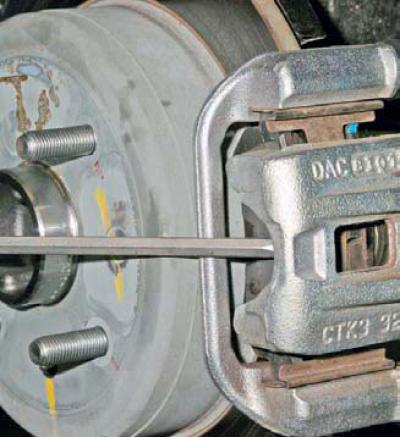
... we move the caliper, sinking the piston into the cylinder.
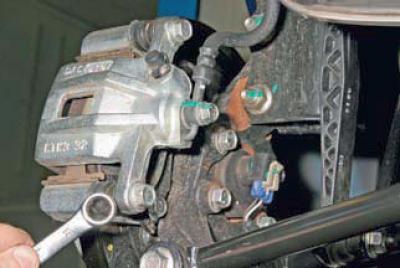
Using a 14mm wrench, unscrew the lower bolt securing the caliper to the guide pin.
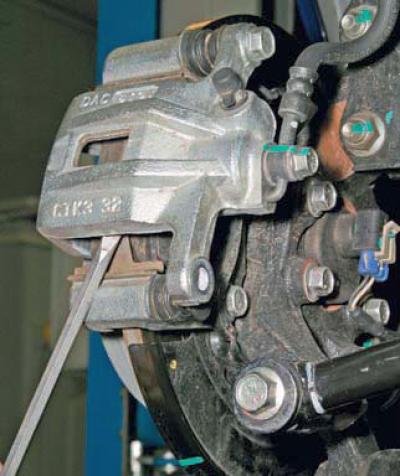
Pry off the caliper with a screwdriver..
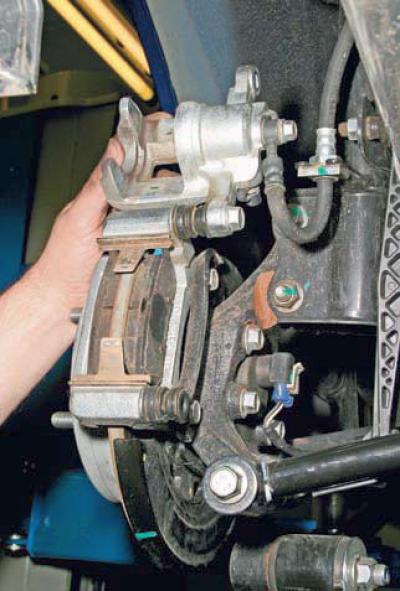
... and raise the caliper by turning it around the axis of the upper guide pin.
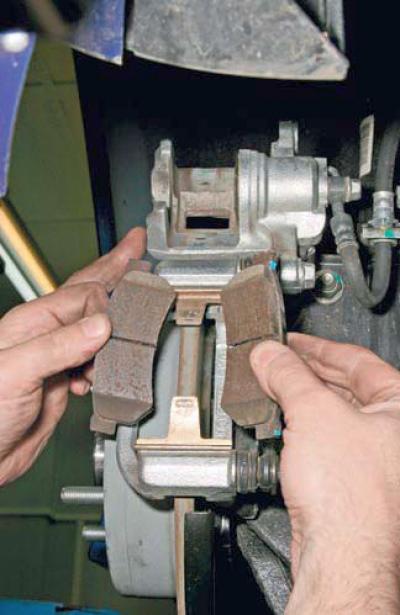
We take out the brake pads from their guide.
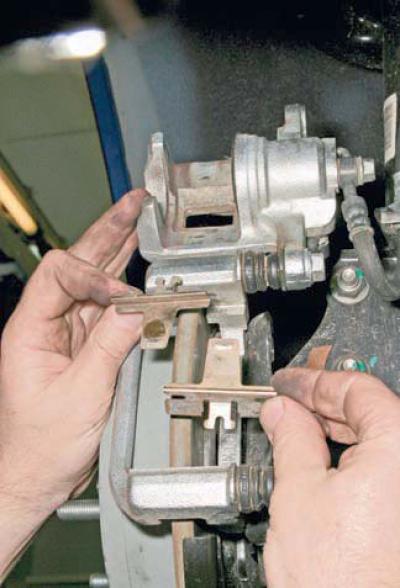
Remove the two spring clips of the pads.
With a metal brush, we clean the seats of the pads in their guide from dirt and corrosion.
Before installing new pads, check the condition of the protective covers of the guide pins.
We replace a torn or loose cover. For this…
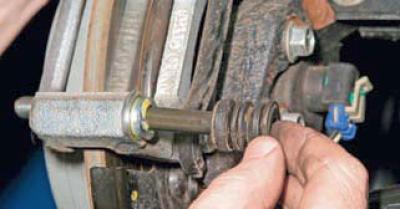
... take out the guide pin with a cover from the hole of the guide pads.
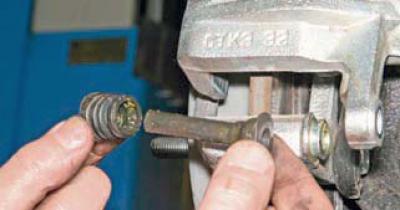
Remove the protective cover from the guide pin.
Before installing the pin, we put a little grease into the hole of the guide pads and apply a thin layer of grease to the surface of the pin.
Before installing new brake pads, we move the piston into the cylinder as much as possible, just as when replacing the brake pads of the front wheel (see Replacing the brake pads of the front wheels).
We install new brake pads in the guide pads and lower the caliper. Similarly, we replace the pads on the right rear wheel.
After replacing the pads, press the brake pedal several times to set the gaps between the pads and discs. We check the fluid level in the tank and, if necessary, bring it to normal.
During operation, the surface of the brake disc becomes uneven, as a result of which the contact area of new, still unused pads with the disc is small. Therefore, during the first 100 km of run after replacing the pads, while the new pads have not run in, be careful, as the braking distance of the car may increase.
